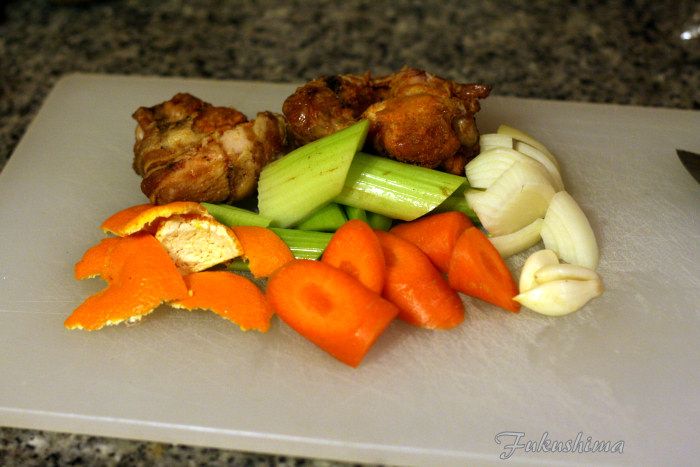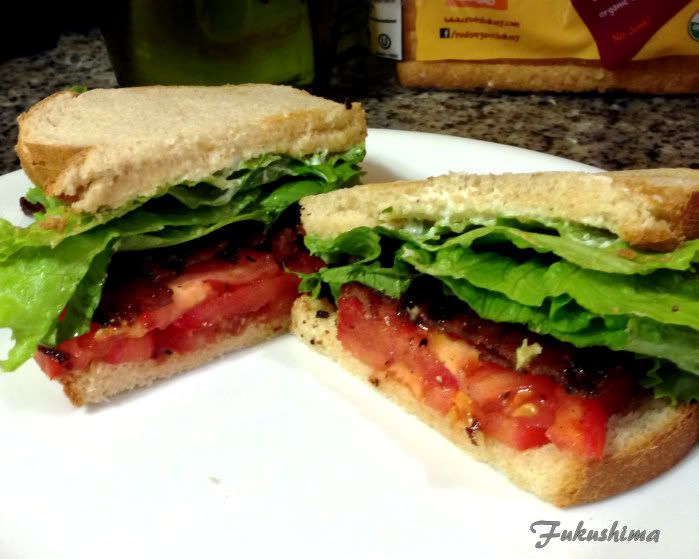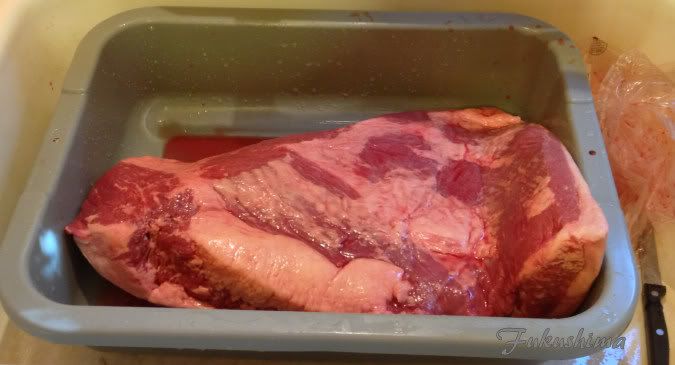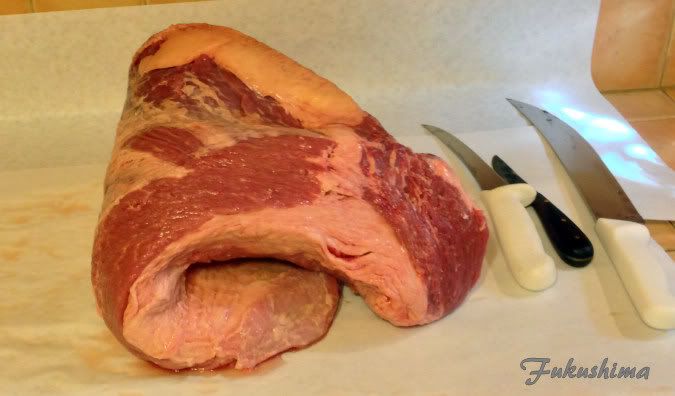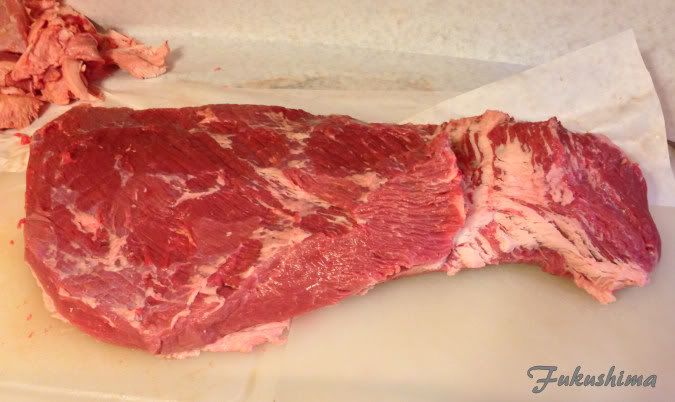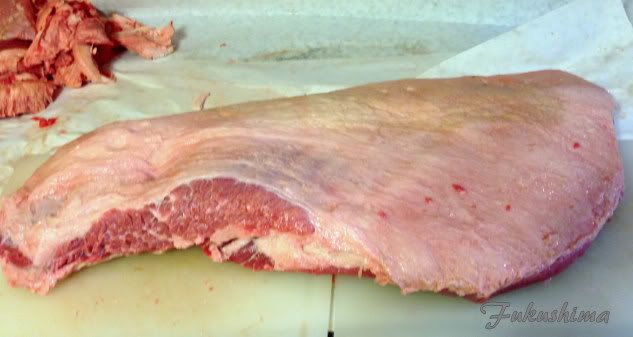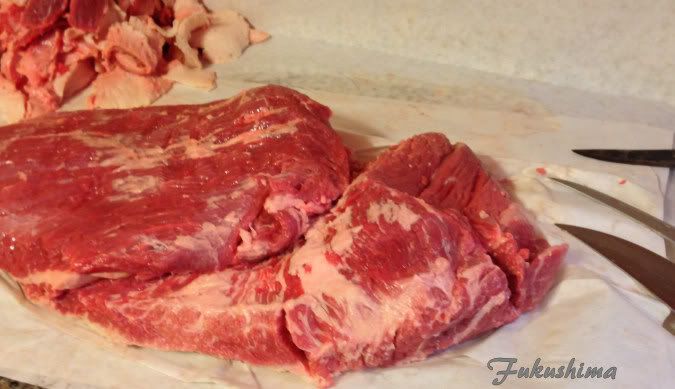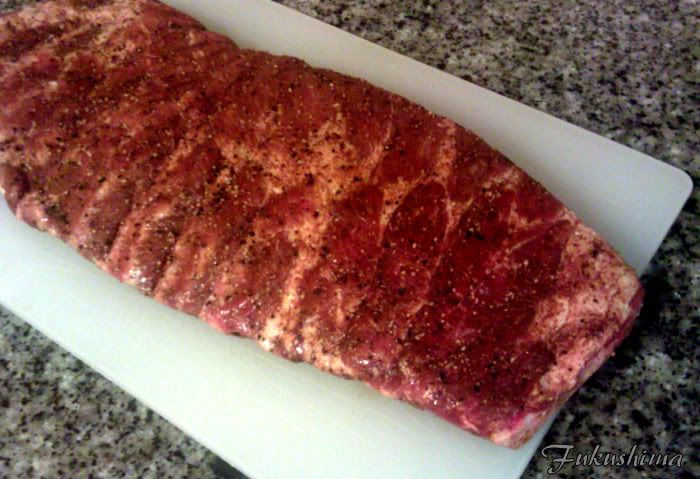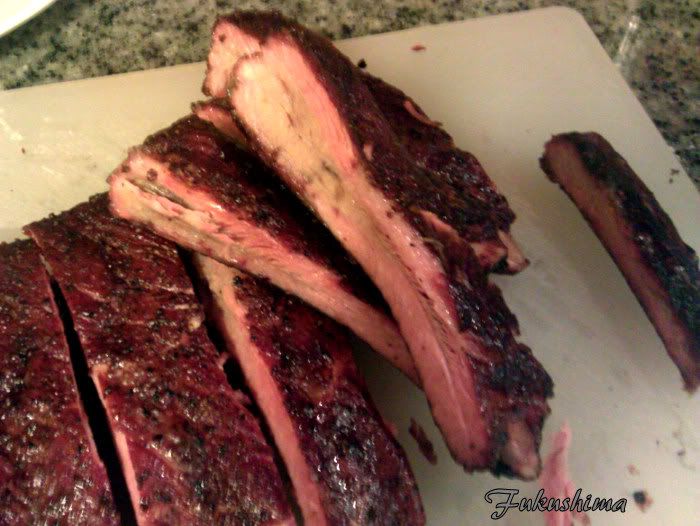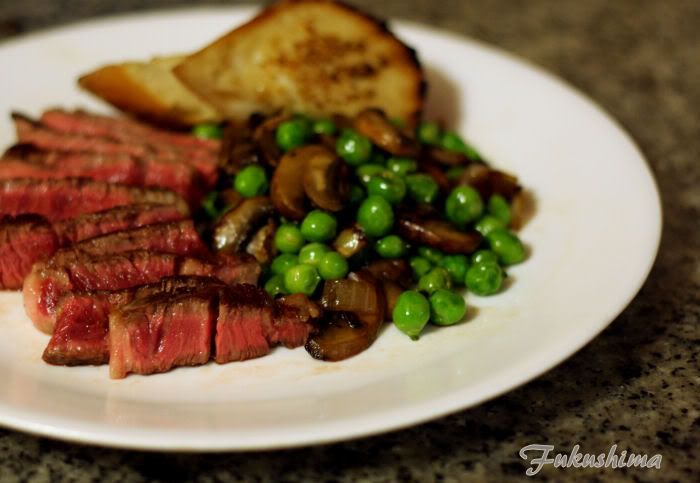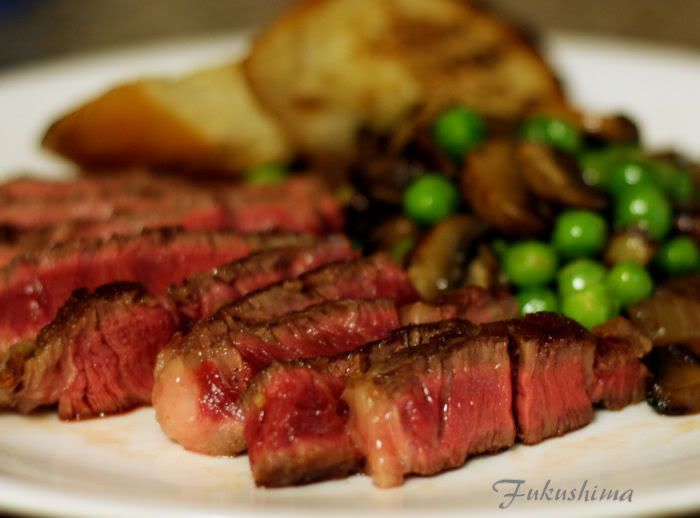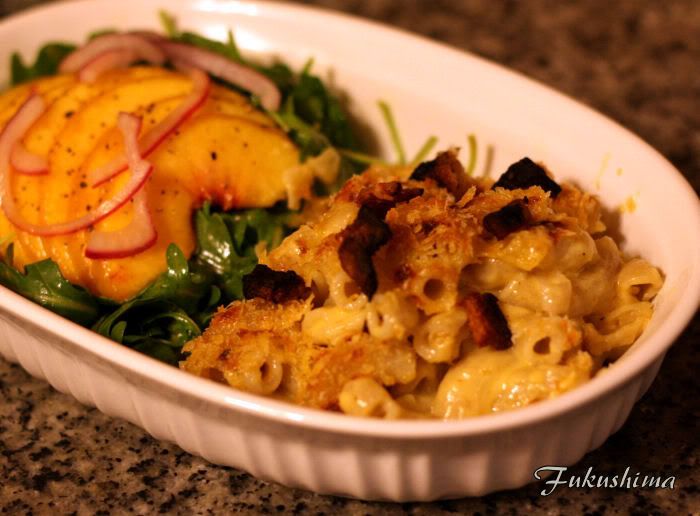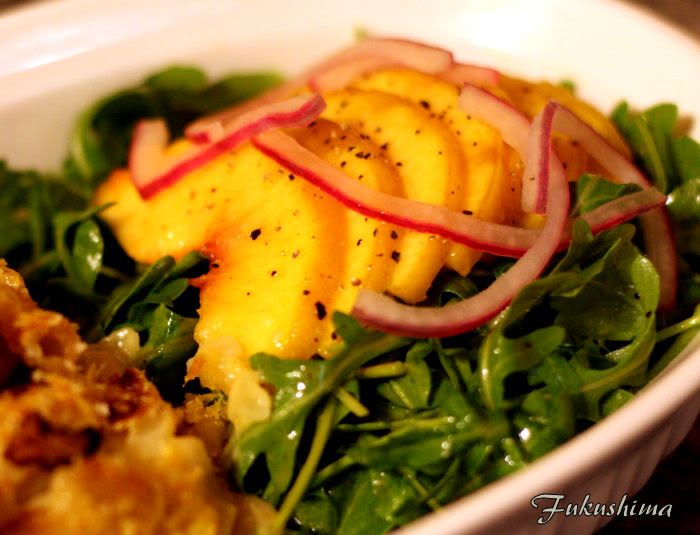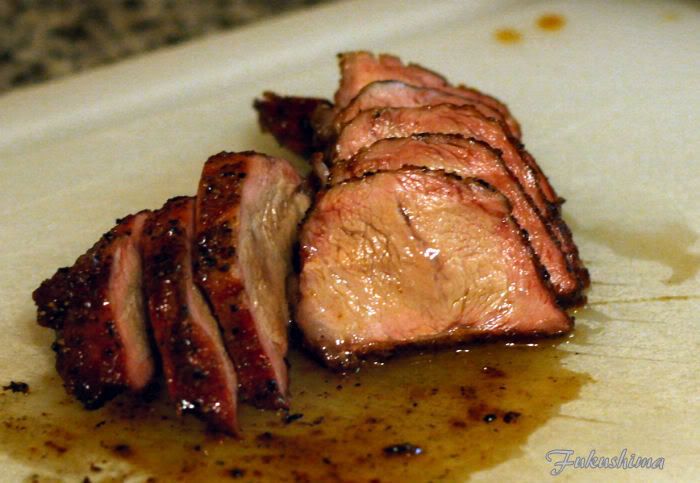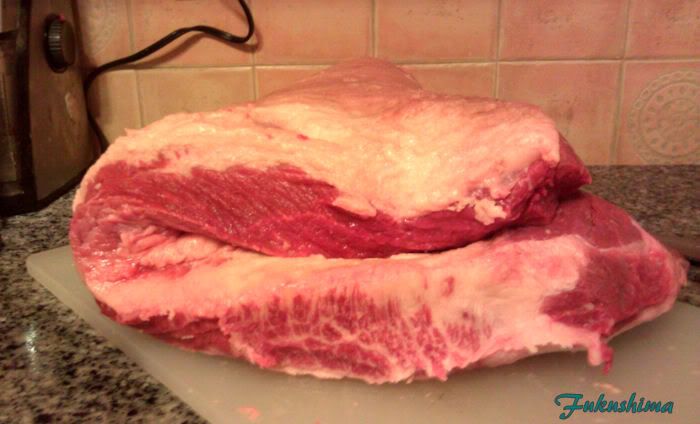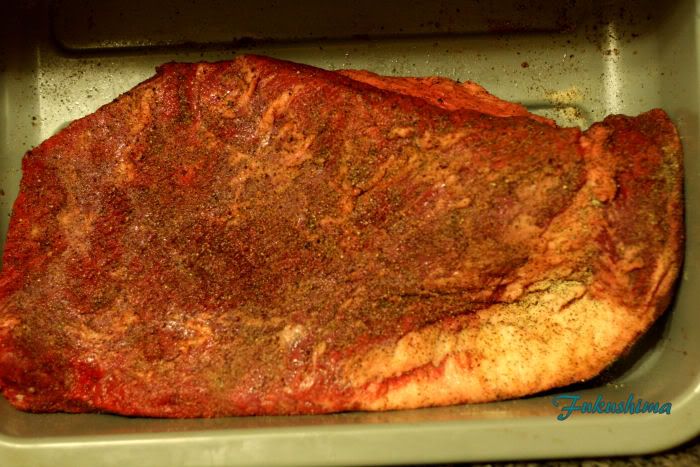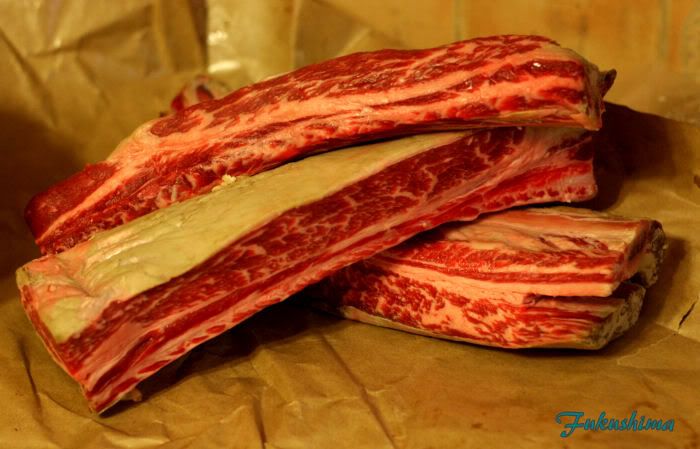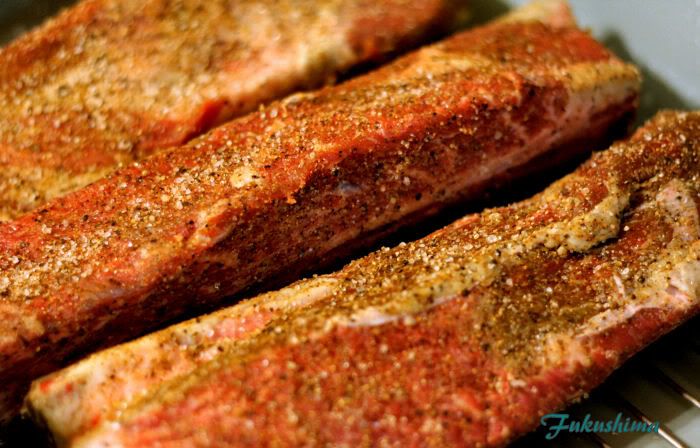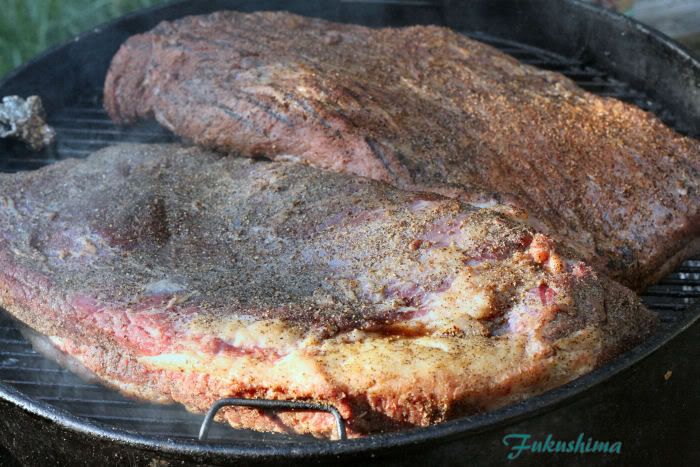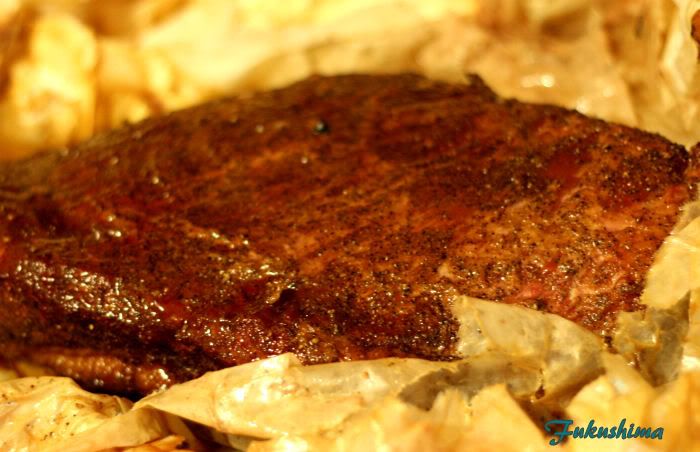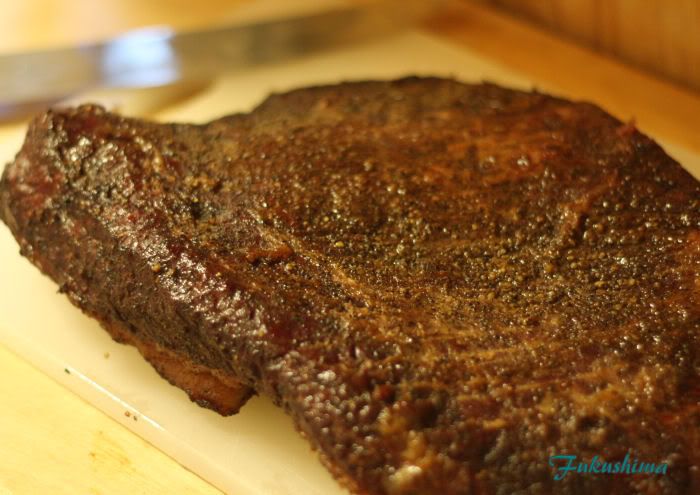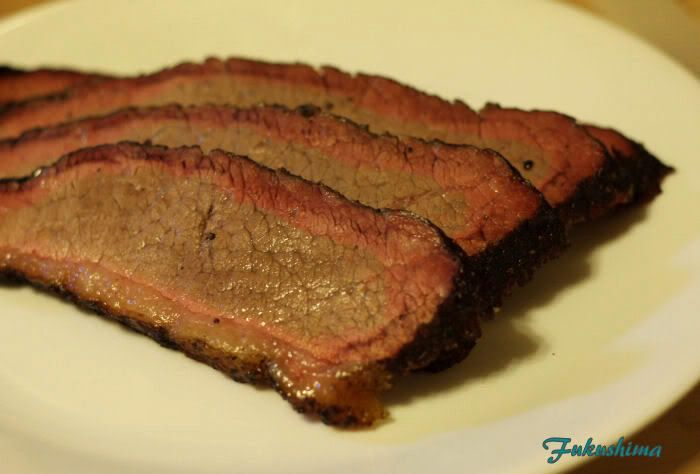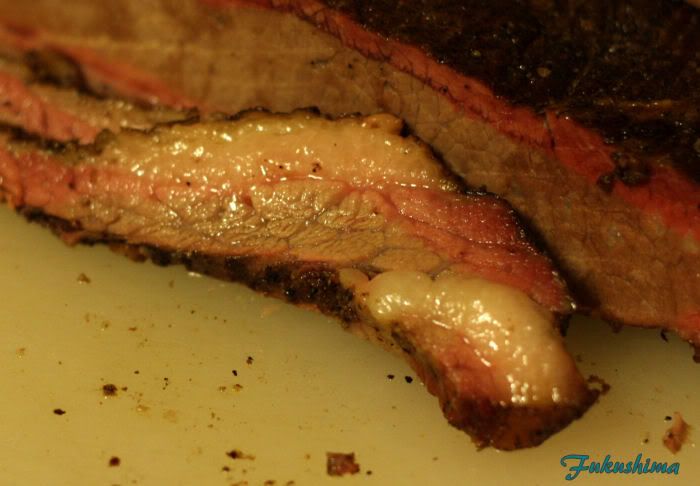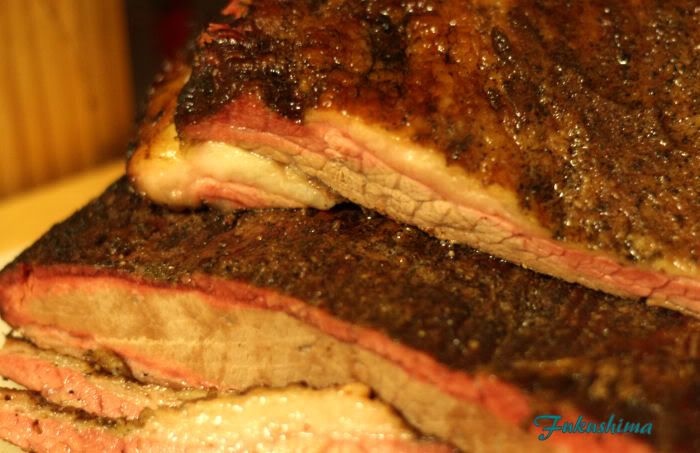A Tale of Two Cooks...
I was tasked with cooking two briskets, one for eating, one for leftovers. Seemed simple enough, yet, when I checked out, a cryo of spare ribs had jumped onto my cart. No matter, I would have a 26" Weber kettle and a Medium Big Green Egg to cook on, I could handle this.
Cook 1: St. Louis-style Spare Ribs
1. Clean and trim ribs, wash thoroughly, scrape meat and dry.
2. Rub was my one of a kind, Leftover Blended Rub, where in Simply Marvelous Cherry and Simply Marvelous Spicy Apple rubs end up blended with the remnants of my Brisket Rub, no proportions are available.
3. Run is applied to each rack, then the racks are stacked and wrapped in plastic wrap, wrap tightly and let sit at room temperature for two hours. The ribs must be wrapped and must be let to sit for at least two hours, and not more than three hours.
4. Fire cooker (Wicked Good and apple wood) and get set to around 285F, apply a second coat of same rub to ribs and place on cooker as soon as it is stable. Allow to cook for at least 3 hours, then test for bend. They won't be really ready, but, close, you are looking for the point where they bend about 45 degrees when held on one end. Then move on to step 5.
5. Apply Pig Honey, in this case, I used version 4+, this is squirted from a soda bottle with a couple of holes punched in the cap. You don't want to use a spray bottle, it needs to soak the meat.
Pig Honey Version 4:
3 cups water
handful of trimmings from previous brisket and butt cooks (needs to be smoked barky parts)
1/4 cup Red Boat Fish Sauce (Worcestershire sauce or Coconut Aminoes work too)
1/2 cup Agave syrup
1 tablespoon rub
1 teaspoon hot sauce
Simmer everything until color is that of a dark broth. Taste should be complex sweet, finishing clean.
Apply the Pig Honey three times during the last 45 minutes of cooking, soaking the meat each time, with the last application no more than 5 minutes before pulling. No foiling or paper.
6. Remove from heat when racks bend 90 degrees, or twisting of bone is acceptable. Place in an oven pan and cover with foil for 10 minutes or so. The ribs should slice easily at this point, with a durable sweet/spicy flavor at first bite.
Just before pulling from cooker
This cook ran at around 300F, and about 4 hours. I do not monitor cook temperature once I put the meat on. I listen for the meat sizzling on the drip pan, as long as I hear sizzling, I make no adjustments. Once it hits the 285F, I don't make any more adjustments, but, when I finished, I wanted to move some more meat onto the BGE and I found it was right at 300F.
The Brisket:
1. The brisket was washed, scraped and dried, and moved to a dry service tub.
2. The brisket received a simple version of my Mother Rub. This rub is focused on providing a complementary seasoning to the meat.
Brisket Mother Rub:
3 parts Redmond Real Kosher Salt
2 part fresh ground black pepper, medium grain
1 part ground chile powder (not chile powder from store, this is just Chile de Arbol powder)
1/4 part lime powder
1/4 part fine Turbinado sugar
3. Apply rub generously to brisket, let sit while cooker is started and brought to temperature, around 30 minutes to an hour.
4. Put meat on pit, fat cap and point towards heat source. In this case, it was a kettle, so the points faced the offset fire, the cap was down. I let the meat run.
5. The kettle was kept at a minimum of 280F and a maximum of 325F, I didn't fuss too much, kept an eye on the Maverick, since I have not cooked on this kettle before. Fired with Wicked Good lump, Natural briquettes and apple.
6. At three hours, opened the cooker, looked for color, it seemed okay, so I wrapped them in butcher paper, two layers, and splashed a little jus that I had made onto the paper before wrapping up. Back into cooker. Here is where things went oddly.
7. At five hours into the cook, I expected it all to be done, not even close. I picked up the first brisket and could tell by feel it was still in the stall. Same case for second brisket. At seven hours into the cook, I could tell the points were done, but, the flats were not. I separated the flats, put them on the BGE at 300F, took the points in and let them rest in a 175F oven. The smaller flat got done after another hour, the larger flat took another 2 hours. Fortunately, the smaller flat and point were done for dinner.
Plated
There were flat slices, point slices and what I consider to be burnt ends, which is to say the parts of the point that I carve off the ends, which I cut into chunks. Not one piece of meat was sauced. The chunks of burned edges were meltingly tender and required no sauce or additional cooking. The sliced flat was tender and had just enough moisture, truly some of the best flat I have had in a very long time. All of the slices were dipped into a jus I made while things were cooking.
Brisket Jus - Platy style:
4 cups water
2 cups chopped fat and meat from brisket trimmings
1 cup chopped cooked brisket trimmings from previous cook
2 tablespoons rub
1 teaspoon Agave syrup
Bring to simmer and hold until liquid takes on a dark brown color and fat render. Filter and reduce by 1/4. Use to dip meat after slicing.
Here is a close-up, hopefully the texture of the meat shows in this shot.
Sliced flat, point and burnt ends
You'll notice that there is no mention of internal temperatures throughout the brisket cook. I am not hiding anything, I did not check the internal temperature of the meat, and did not use any timing to determine completion of the cook. I relied upon the heat to get the meat done, opened at times when I felt is smelled right, or when I felt the meat should be close. To determine time to pull, I relied initially on feeling, squeezing the flat and point through the butcher paper, soft means ready to check with a probe. Hard means stall, sort of gives means I should pay attention in another 30 minutes.

